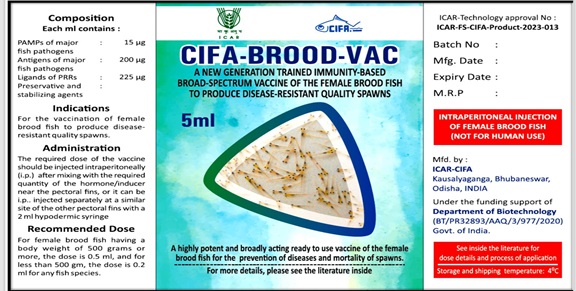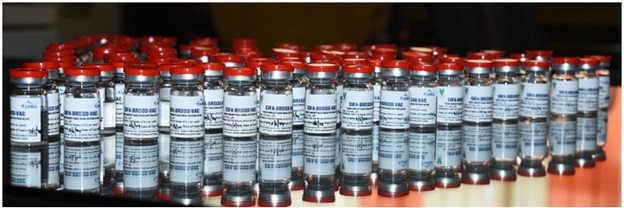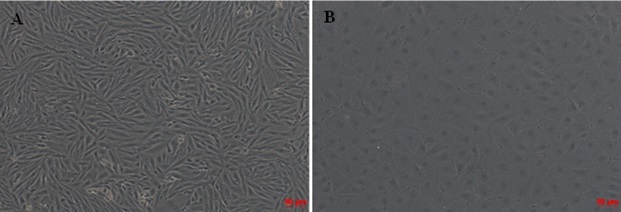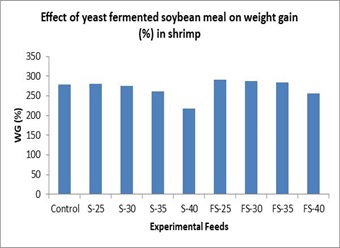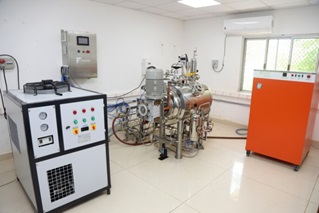Overview
The Aquaculture and Marine Biotechnology program has been implemented with the goal of enhancing both aquaculture production and productivity, while also harnessing marine resources for valuable products and processes. This program plays a vital role in the agricultural economy by ensuring food production for nutritional security.
The Department has undertaken various initiatives to benefit the aquatic and marine sectors through this program. These initiatives include the development of novel cell lines, improvement of aqua feed, creation of advanced diagnostics and therapeutics, research on fish genomics and transcriptomics, management of fish and shellfish diseases, exploration of marine ornamental resources, and engagement in bio-prospecting activities.
Objectives: The major goals of this programme are -
- To enhance fish production through sustainable utilization & development of natural resources
- To facilitate the conservation of the natural aquatic and marine resources for improving the ecosystem and the deter the climate change
- To develop the aquatic and marine available resources as nutraceuticals
- To develop the technology for aquatic and marine animals disease diagnosis and their treatment
- To develop the feed for sustaining the fisheries sector
- To augment the development of constituents of aquatic or marine reserves /resources for mankind healthcare and waste management
- To conserve the aquatic/marine ecosyste
Key Achievements and Success Stories
- Polychaete worms are rich sources of nutrients such as PUFA, enzymes, and hormones which help in oocyte development and maturation of shrimps. Research supported by DBT at ICAR-CIBA Chennai has developed a simple small scale culture method for Mud worm Polychaete Marphysa madrasi and marine sand worm Perinerisnuntia spp. Forty adults of M. madrasi, when reared in 100L tanks, produced approx. 2016 juveniles in four months, with 90% survival. Around 500 juveniles were mass-reared in a 1000 L FRP tank by feeding with diatom, Chaetoceroscalciferons (106 CFU/ml) with a mixture of CIBA shrimp larvae feed which produced 400 adults with 80 % survival in 4 months (19± 0.3cm) with SGR under mass culture was 0.33. The net weight gain was 0.33 g for juveniles with biomass.
- Perna viridis is considered an important species for aquaculture in India and is widely cultured along the southwestern coast, especially Kerala and Karnataka. The De Novo whole genome and transcriptome sequencing of the Asian green mussel, Perna viridis using advanced genomic methods was carried out at ICAR-CMFRI, Kochi. The final assembly resulted in a genome of 723.49 Mb in size with a scaffold N50 of 49.74 Mb. The BUSCO completeness of the assembly has been evaluated as 96.8%. Further, the expansion of inhibitors of apoptosis gene families and caspase gene families was observed indicating their tolerance to environmental challenges.
- Disease of spawn and fry and their mortality are one of the major problems in the expansion of aquaculture. To address this problem, a project being implemented at ICAR-CIFA, Bhubaneswar with the support of DBT has led to the development of a vaccine named “CIFA-Brood-Vac” which can prevent diseases and mortality of spawns. This vaccine has been tested extensively in various hatcheries of Odisha and West Bengal confirming its efficacy in producing disease resistance spawns (Figure 1).
- An effort was made to develop whole virus vaccines against cyprinid herpesvirus-2 (CyHV-2) and tilapia lake virus (TiLV) under the DBT-supported project being implemented at CAHC, Melvisharam/ICAR-CIFA, Bhubaneswar and KUFOS, Cochin. These viruses are responsible for mortality of goldfish and tilapia respectively. The researchers have produced whole virus vaccine against CyHV-2 and TiLV using susceptible fish cell lines. The vaccine trails are being carried out at ICAR-CIFA and KUFOS. TiLV whole virus vaccine is shown to be efficient in imparting tilapia protection against the virus.(Figure 2)
- Fish meal is the important ingredient in shrimp feeds. Due to its high cost and sustainability issues, replacement of fish meal is an important area of research in aquaculture nutrition. Scientists working in this area at ICAR-Central Institute of Brackish water Aquaculture, Chennai have shown in their studies that yeast fermentation of soybean meal significantly improves inclusion level in shrimp diet by increasing the nutrient digestibility and growth. The growth trial results indicated that soybean meal can be included up to 35% in the grow-out feed of P. vannamei and fermentation improved the growth by approx. 8.5%. (Figure 3)
- Fish waste has so far not been exploited for large-scale isolation of glycosaminoglycans (GAGs). Scientists at CSIR-CFTRI, Mysuru have developed a protocol for its isolation, which is novel, sustainable, economical, and eco-friendly green method. The isolated GAGs were characterized for structure and was found to be a mixture of chondroitin/dermatan sulfate (CS/DS) and heparansulfate in the ratio 80:20. The isolated GAGs were able to promote osteogenesis in MC3T3 cell and promote wound healing in HCAT cells. Studies on the mechanism of exogenous GAG-mediatedosteogenesis is underway. (Figure 4)
- In another study focused on live feed for aquaculture undertaken by researchers at AMET University, Chennai has identified a new approach using monoalgal diet and adopting selective breeding method for high density culture of A. royiand P. serricaudatus copepod species. Improved growth and survival of Asian seabass, L. calcarifer larvae and critical first feeding stage of silver pompano, T. blochii larvae was achieved with A. royi nauplii compared to the traditional rotifers live feed. Indigenous copepod live feed protocol has been developed for successful marine finfish larval seed production.
- Monitoring variables such as dissolved oxygen, pH, tds and pond temperature is a key aspect of high-quality fish farming. An Intelligence forecasting approach is required to address the complexity of farmer's crop monitoring issues, scientists at Vel Tech Rangarajan R&D Institute of Science and Technology, Chennai have developed a hybrid intelligence mechanism for forecasting efficiently and handling a large amount of streaming data through Auto regressive long short-term memory integrated moving averages (ARLSTMIMA ). The intelligent algorithm is embedded into Tiny ML an IoT device developed for getting real-time data. As a result of this procedure, the pond's water quality and environmental conditions can be continuously checked to guarantee a healthy prawn crop.
- DBT funded National Repository of Fish cell lines established at C Abdul Hakeem College for conducting research on application of cell lines in virological and biomedical research have reported development of novel cell lines from Asian seabass and Osteobramabelangiri. They have also isolated reported new viral pathogens (CyHV-3 and tilapia parvovirus) using cell lines for vaccine production. In addition to this, the center has sofar imparted fish cell culture training to 29 trainees and helped 11 PhD scholars for short term research using fish cell line.
Figure 1
Figure1: CIFA-Brood-Vac
Figure 2
Figure 2: Susceptible fish cell lines for propagation of whole virus vaccine against TiLV and CyHV-2. A – Snakehead kidney cell line, B – Grouper brain cell line
Figure 3
Figure 3( A). Effect of yeast soyabean meal on weight gain ( %) in shrimp
Figure 3(B). Pilot Scale Solid State Fermentor Funded by DBT
Figure 4
Figure 4(A). Effect of GAGs on Collagen Production
Figure 4(B). Effect of GAGs on Extracellular Matrix Production
Contacts Concerned Officer for more Information
| Programme Head | Dr. Nitin Kumar Jain, Scientist G |
|---|---|
| nitink[dot]jain[at]nic[dot]in | |
| Phone No. | 011-24365972 |
| Programme Officer | Phone No. | |
|---|---|---|
| Dr. Manish Rana, Scientist F | manish[dot]rana[at]nic[dot]in | 011-24363012 |
| Dr. Lokesh Kumar Narnoliya, Scientist D | lokesh[dot]narnoliya[at]dbt[dot]nic[dot]in | 011-24360295 |
















